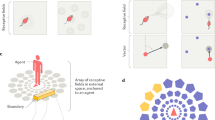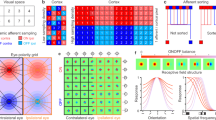Abstract.
In this paper, we propose a modification of Kohonen's self-organization map (SOM) algorithm. When the input signal space is not convex, some reference vectors of SOM can protrude from it. The input signal space must be convex to keep all the reference vectors fixed on it for any updates. Thus, we introduce a projection learning method that fixes the reference vectors onto the input signal space. This version of SOM can be applied to a non-convex input signal space. We applied SOM with projection learning to a direction map observed in the primary visual cortex of area 17 of ferrets, and area 18 of cats. Neurons in those areas responded selectively to the orientation of edges or line segments, and their directions of motion. Some iso-orientation domains were subdivided into selective regions for the opposite direction of motion. The abstract input signal space of the direction map described in the manner proposed by Obermayer and Blasdel [(1993) J Neurosci 13: 4114–4129] is not convex. We successfully used SOM with projection learning to reproduce a direction-orientation joint map.
Similar content being viewed by others
Author information
Authors and Affiliations
Additional information
Received: 29 September 2000 / Accepted: 7 March 2001
Rights and permissions
About this article
Cite this article
Shouno, H., Kurata, K. Formation of a direction map by projection learning using Kohonen's self-organization map. Biol Cybern 85, 241–246 (2001). https://doi.org/10.1007/s004220100255
Issue Date:
DOI: https://doi.org/10.1007/s004220100255




